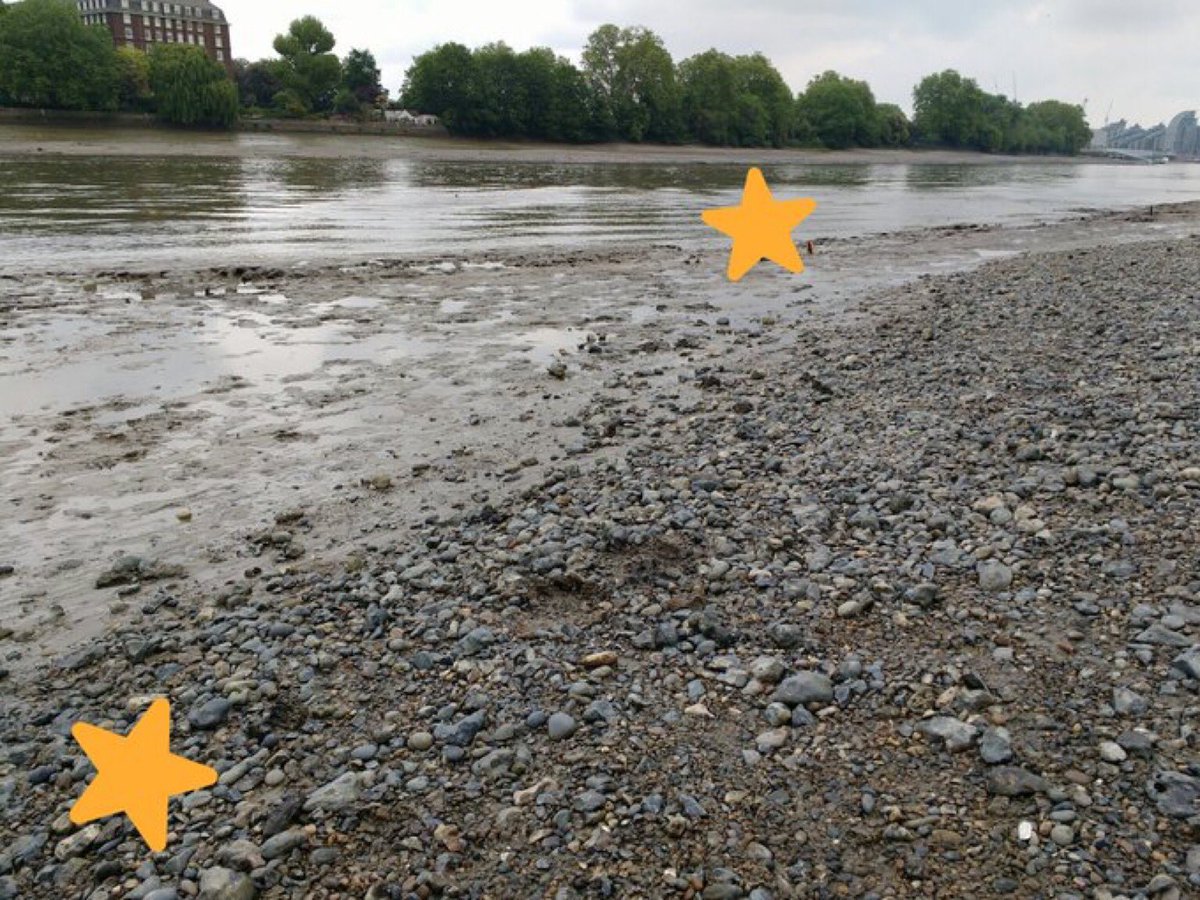THREAD. Fabulous work by @ThamesDiscovery & @Nathalie_Cohen has identified a plethora of #AngloSaxon #fishtraps along the Thames. Once wattle-sided, the surviving framing posts widen as they lead up the riverbank, filling at high tide & once trapping fish in the apex on the ebb.. 

(1a. The reconstruction is of an AngloSaxon fishtrap just up the Essex coast on the Blackwater estuary via archaeologydataservice.ac.uk/archiveDS/arch…).
2. These are the posts of the #AngloSaxon #fishtrap at Greenwich, tweeted by @ThamesDiscovery on 3 March this year.. 

And here’s the #AngloSaxon #fishtrap on the bank of the Thames at Nine Elms, Vauxhall, tweeted by @ThamesDiscovery on 3 October 2016 

4. And my favourite, the #AngloSaxon #fishtrap on the river bank at Chelsea, tweeted by @ThamesDiscovery in October 2016 and @Nathalie_Cohen in (I think) January 2017 

5. RT @ThamesDiscovery on 19 May 2019: Timber and wattle fishtrap at #Putney, dated to 410-630AD. This feature has been recorded and monitored by Wandsworth History Society since 1971. It's hard to make out in the photo, so we added a few stars! 

6. And finally, the #AngloSaxon fishtrap identified by @ThamesDiscovery at Isleworth, Hounslow, in May 2017. 

7. Here’s a flattened wicker fishtrap found by @ThamesDiscovery in May 2017 - likely to have been placed at the apex of the larger post and wattle construction. .. 

8. A general description of #AngloSaxon fish traps. For an instant, the expertise & daily lives of coastal & tidal communities becomes vividly real - going into mud & water on ebbing tides to build & maintain the traps, & collect fish at each low tide archaeologydataservice.ac.uk/archiveDS/arch… END 

• • •
Missing some Tweet in this thread? You can try to
force a refresh














